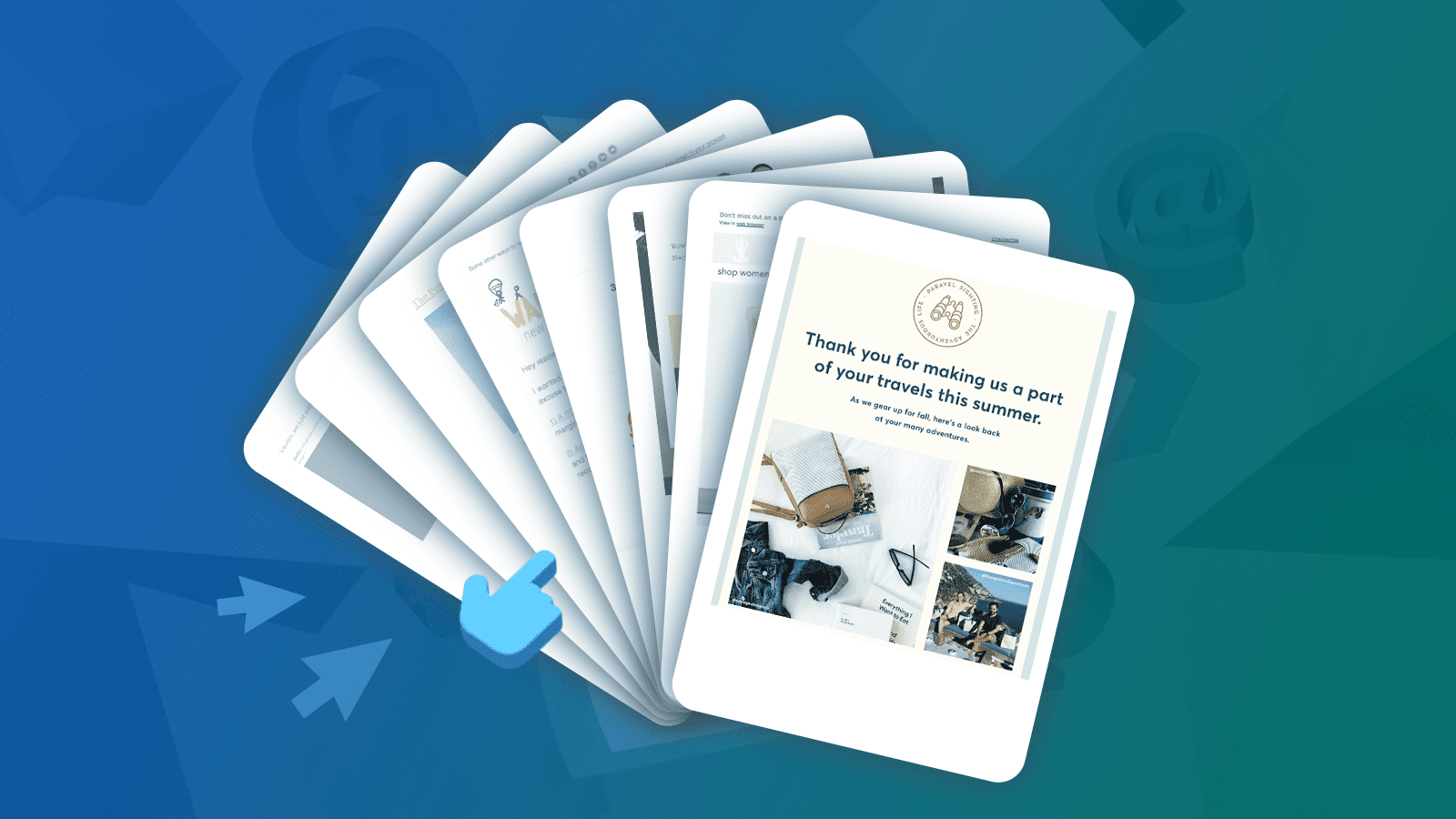In 2021, email is still the undisputed champion of digital marketing.
With a return of $44 for every $1 spent on email marketing, 59% of marketers continue to see email as their highest ROI channel. But the inbox has also become a lot more competitive, and it’s getting a lot harder to rise above the competition and grab your readers’ attention.
In fact, in a recent survey by Campaign Monitor, 58% of marketers said increasing engagement rates was their #1 goal, and 44% said it was their #1 challenge.
In this article, we’ll share five powerful strategies to boost your email engagement rates in the new year.
1. Optimize Your Open Rate
When it comes to engagement, the sender name and subject line are by far the most important elements of your email. Research by SuperOffice found that 45% of subscribers read emails because of who they’re from, and 33% read emails because of the subject line.
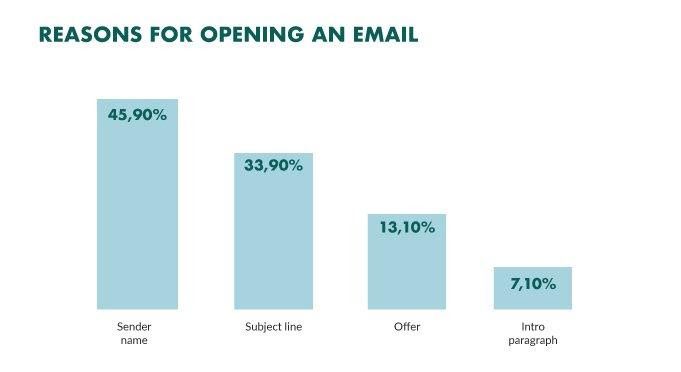
This makes intuitive sense. After all, in order for subscribers to engage with your email, they have to open it in the first place!
So how can you optimize these elements?
When it comes to sender names, personal addresses beat company addresses every time. People want to hear from real human beings, not a faceless corporation. The difference is quite significant: a study by Pinpointe Marketing found that using a specific personal sender name increased open rates by 15-35%. Yet surprisingly, SuperOffice found that 89% of brands still use corporate names in their email marketing. So not only is this an easy engagement boost, it’s still a relatively untapped opportunity.
When it comes to subject lines, brevity is the soul of engagement. Marketing analytics firm Retention Science found that 6-10 words was the sweet spot for maximizing opens.
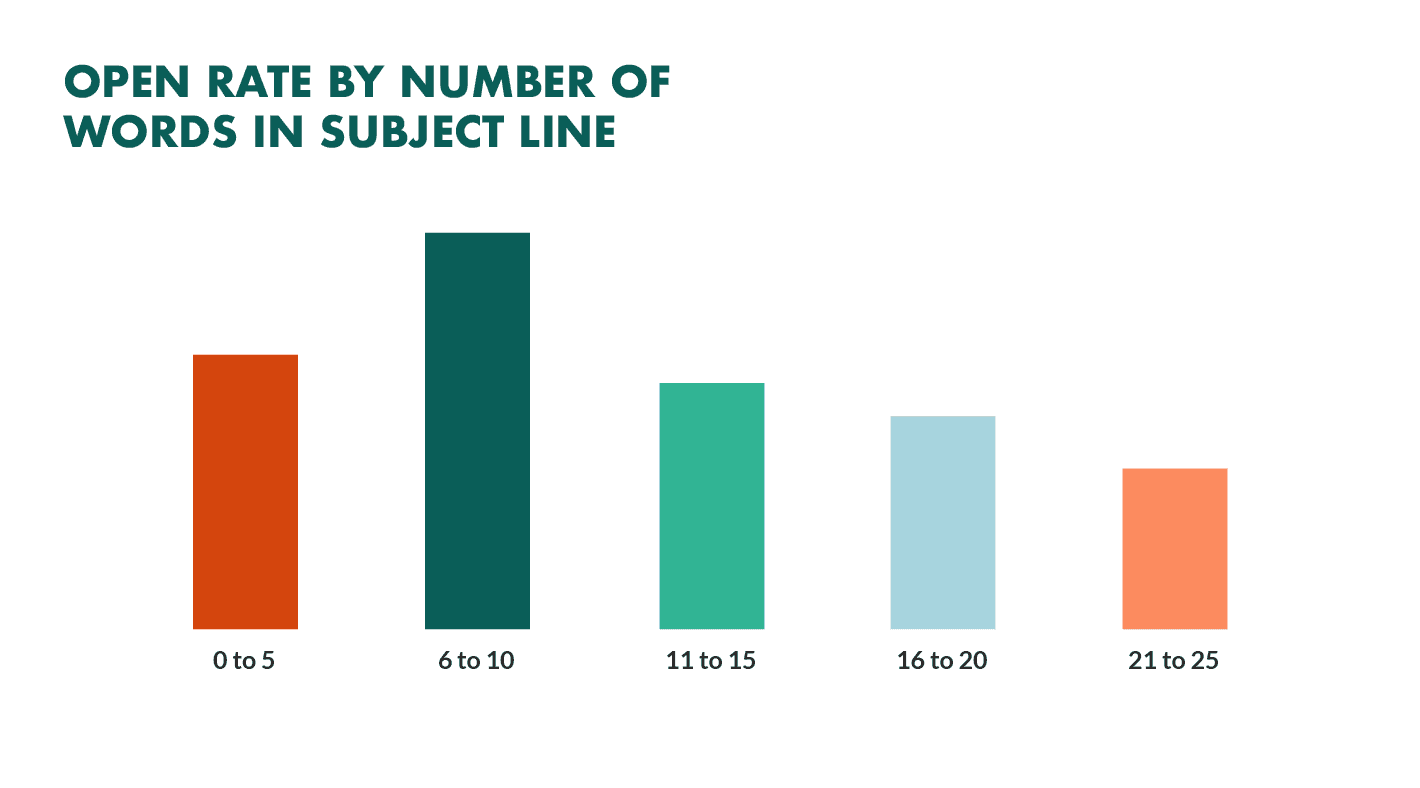
For mobile, the optimal subject line length is even shorter, as many devices won’t be able to display subject lines over 90 characters. And since over 50% of emails are opened on mobile devices, it’s well worth sticking to that limit.
While this may sound restrictive, remember that your subject line has one job only: get the subscriber to open your email. You don’t have to cram all your information into the first line. Instead, aim for short, clear subject lines that provide just enough information to leave readers wanting more.
While writing the perfect subject line can be an art in itself, here are a few ideas:
Include specific numbers
This could be a numbered list of how-to tips, a precise ROI figure, or an exact quantity of units sold. Hard numbers grab the reader’s attention and make abstract ideas feel concrete. The specificity of the information makes it more compelling, and makes readers more likely to click through and learn more.
Example: 4,235 people bought these Bose speakers last month
Create a sense of urgency or scarcity
Adding a little urgency can be a very powerful way to encourage action – especially when it comes to email. When most people open their crowded inboxes, they’re usually looking for the most urgent messages that need to be dealt with first. Put your email in that category, and you’ll greatly increase its open rate.
Example: Special weekend promotion – only 2 days left
Ask a question
Posing a question is a great way to stand out in a sea of competing subject lines. The humble question mark is a clear indicator to the reader of an open loop waiting to be closed. Assuming the question is relevant to the reader, and can be easily answered by opening the email, they are highly likely to do so.
Example: Are you looking for a better way to design your marketing emails?
2. Segmentation & Personalization
Personalization has an enormous impact on email engagement. According to Campaign Monitor, personalized email campaigns drive a 760% increase in revenue over generic, one-size-fits-all campaigns.
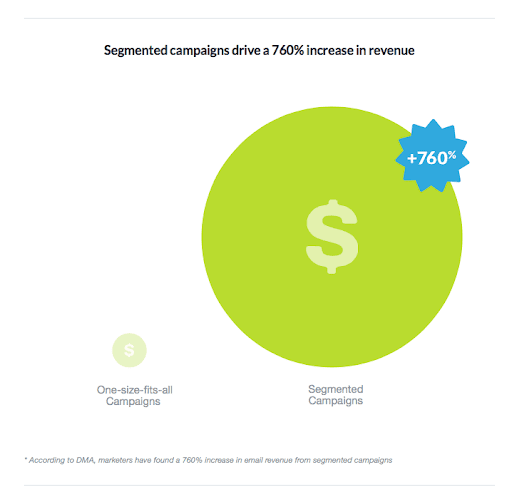
The key to effective personalization is list segmentation. By dividing your subscriber list into groups with common characteristics, you’ll be able to send more relevant emails to each subscriber, thereby connecting with them more effectively and earning their trust. Over time, that makes them a lot more likely to open emails you send them.
There are several effective ways to segment your list, and sophisticated email marketers will take advantage of all of them:
a) By Demographics
This is the most common segmentation method. It’s a fairly straightforward approach that groups subscribers according to personal characteristics such as location, age, gender, or occupation. The idea is that subscribers within a demographic are likely to share common interests.
It’s possible to get more creative with demographic targeting though. For example, instead of grouping people by occupation, a B2B software company might choose to group them by company size, level of seniority or industry.
Each of these segmentation strategies will enable a different approach to email marketing. Smaller companies can be sent a promotion on self-serve software plans, while larger companies can be encouraged to book an enterprise demo. Seniority levels can be used to send different emails to decision makers and influencers. And subscribers can be sent industry-specific case studies to highlight how the solution has been helpful in their field.
b) By Buyer Journey
Different types of content are likely to be relevant to customers at different stages of the buyer journey:
- New subscribers may appreciate welcome emails that introduce them to your brand and the various products you offer
- New paying customers often benefit from onboarding emails that teach them how to get the most value from the products they’ve just bought
- Loyal repeat customers can be rewarded with exclusive offers or early access to new products
All of these emails can provide significant value to the customer, but send them too early or too late in the journey and they just become a nuisance. Here’s an example done right:
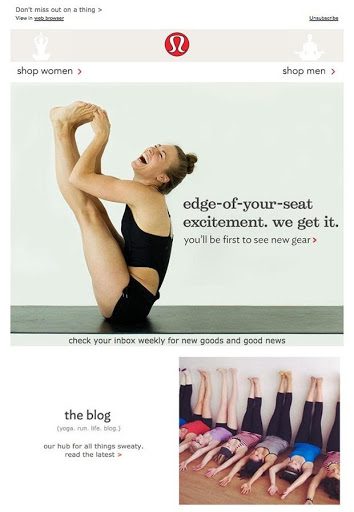
Lululemon welcomes new subscribers and lets them know exactly how often to expect emails, then provides a handy link to their blog for more content. What they don’t do is overload newcomers with a bunch of different products or promotional copy right off the bat.
It’s just enough information at just the right time.
c) By Behavior
Companies today have a wealth of data about their customers. By tracking the links your customers click, the forms they submit and any other behavior they exhibit on your website or on social media, you can take customer segmentation to the next level.
For instance, Netflix monitors viewing behavior to send tailored show recommendations to their customers:
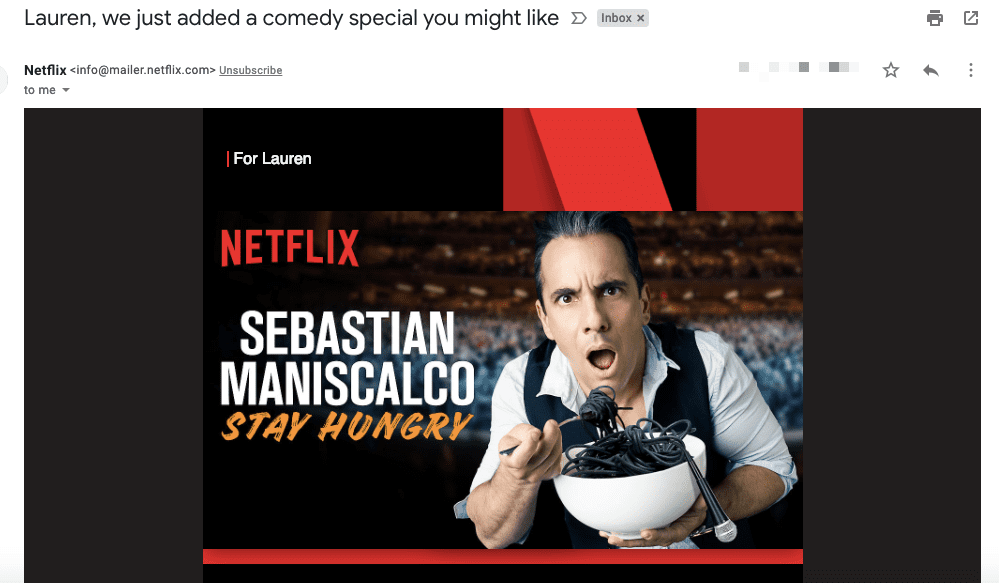
This particular customer is a regular viewer of comedy shows, so Netflix sent them this email promoting their latest show by stand-up comedian Sebastian Maniscalco. Fans of other genres are sent different suggestions based on their unique viewing habits, thus ensuring that Netflix’s recommendations are always relevant to the recipient.
3. Value First, Promotion Second
Email marketing is fundamentally about relationships. And you don’t build a relationship by only contacting your customers when you want to sell them something. Instead, you should make sure that you’re regularly providing value to your subscribers first, and promoting your products second.
Connection
Value doesn’t have to be complicated or involve a lot of extra work. Often, it’s simply about adding a human touch to your emails. For example, storytelling expert Bernadette Jiwa often sends short, thought-provoking emails with no links to her books or consulting services.
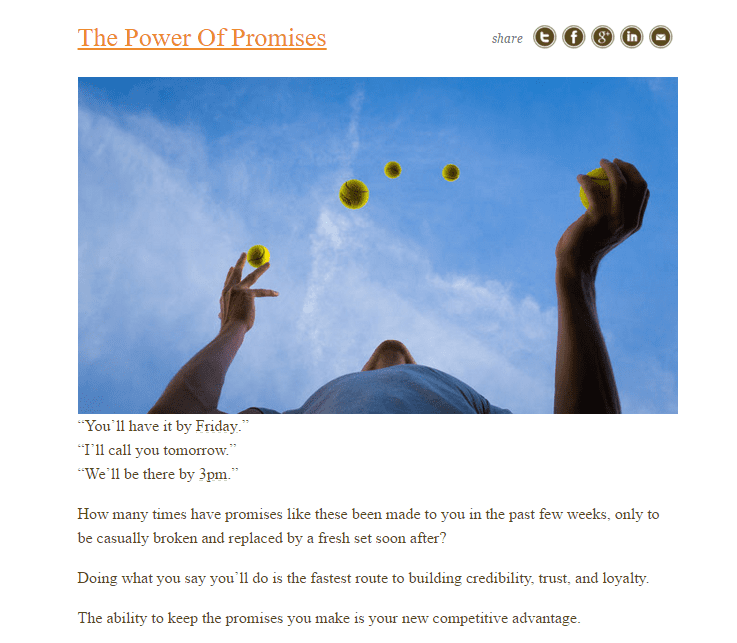
This email might seem to violate marketing “best practices”, as it’s not directly connected to Bernadette’s area of expertise (storytelling), doesn’t promote any of her products and services, and even lacks a call-to-action button or link.
But that’s precisely the point. There is no commercial motive here, just a genuine desire to connect with her audience. In the long run, that’s how you build authentic, trust-based relationships with your customers.
Convenience
Another way to add value is to give your audience different ways of consuming your content. While all of your subscribers want to hear from you, everyone has their own favorite way of absorbing new information. By providing your content in multiple formats, you’ll be making their experience as easy, enjoyable and convenient as possible.
For instance, Tim Urban wrote an awesome, in-depth post about SpaceX, and sent out this email to promote it:
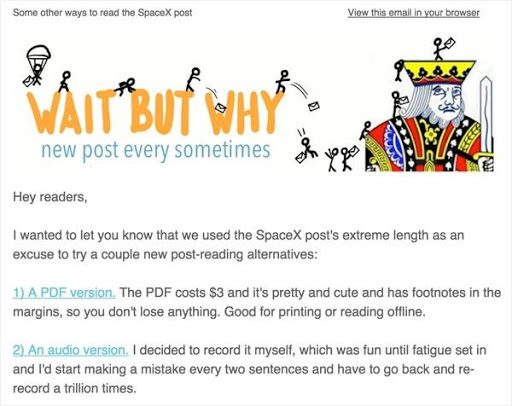
The reason this email is so great is that it addresses the key barrier most subscribers will have to reading the article: its extreme length. This makes it a lot more convenient to read the article in a portable PDF or to listen to an audio recording while doing chores.
As a bonus, it also monetizes the article for relatively little effort. Given the length of the article, $3 is likely to be a steal for someone who’s already willing to commit the time to read the whole thing.
Personalized Education
Combining personalization with value is a very powerful way to increase engagement. After all, everyone wants to learn more about their favorite subject: themselves.
Here’s a great example from Mint:
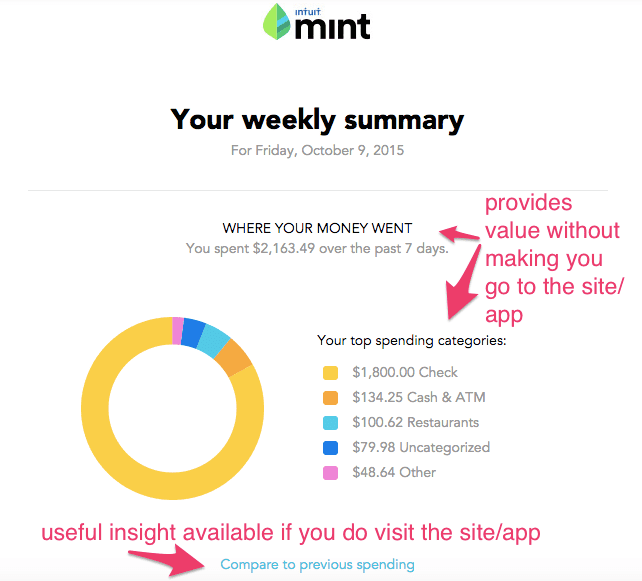
This weekly report gives users a high-level view of their own spending habits, and is valuable information they can’t get anywhere else. If you’re a Mint user, there’s a good chance you’ll be opening these emails every week, and over time, that creates a regular habit that makes for consistent user engagement.
4. Social Proof
Social proof has always been, and will continue to be, one of the most important drivers of customer engagement. In fact, 93% of consumers say that online reviews have an impact on their purchasing decision.
This is especially the case when customers are trying out a new product or service. According to Robert Cialdini, author of the classic book “Influence: The Psychology of Persuasion”:
“Social proof is most powerful for those who feel unfamiliar or unsure in a specific situation and who, consequently, must look outside of themselves for evidence of how best to behave there.”
In other words, when we’re facing uncertainty, other people’s decisions and experiences can help us build a more solid foundation for our own decision. This is particularly effective when those other people have relevant expertise, as demonstrated in this email by language-learning app Duolingo:
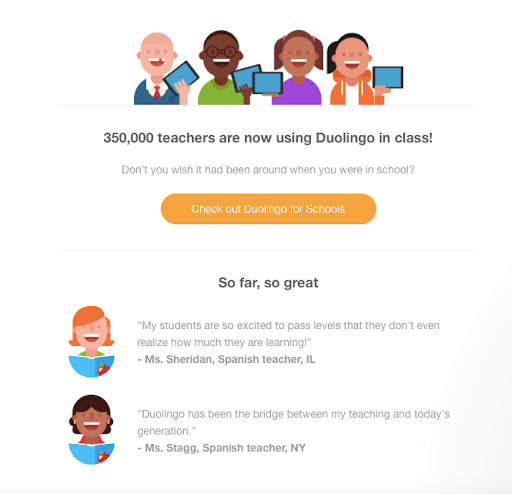
350,000 is a big number, especially when you consider that each teacher is probably using it in multiple classes with hundreds of students in total. Duolingo also includes testimonials from teachers about the effectiveness of the app. Since teachers are commonly viewed as experts on education, this email makes a really convincing case for the user to click through and learn more.
But while user numbers and testimonials can be very compelling, user-generated content (UGC) can elevate your social proof to another level. According to Salesforce, such content can increase email clickthrough rates by 73%.
To see why, check out this email from eco-friendly luggage and handbag brand Paravel:
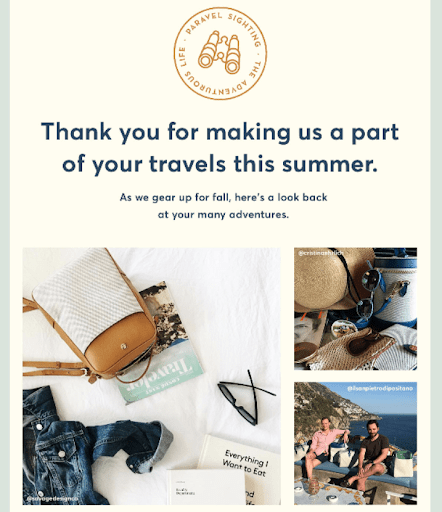
Following the principle of “show, don’t tell”, Paravel doesn’t boast about how much their customers love them. Instead, they’ve simply curated the best photos that their customers have taken of their products and how they’ve been using them on their summer travels.
This example really demonstrates the efficiency of UGC. Not only did Paravel not have to create this content themselves, but promoting customer photos allows them to grow engagement on email and across their social channels at the same time.
5. Dynamic and Interactive Content
The only thing more attention-grabbing than a picture is a moving picture. Including any kind of animation in your email, you give it a much better chance of standing out and engaging your audience.
The simplest example of this is the humble GIF. In this classic 2014 Marketing Sherpa case study, Dell launched an email campaign to promote its then cutting-edge XPS 12 Convertible Ultrabook. Since most consumers at the time did not know what a convertible was, they decided to use a GIF to illustrate how it worked:
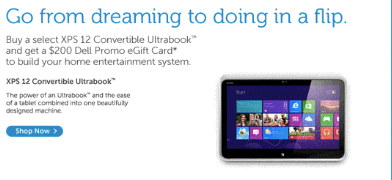
This was much more effective than any text description or static image could be, and resulted in:
- A 6% increase in open rate
- A 42% increase in click rate
- A 103% increase in conversion rate
- A 109% increase in revenue
Subsequently, many other companies followed in Dell and other pioneers’ footsteps and launched their own animated campaigns to great success.
Fast-forward to 2021, and the email marketing landscape is seeing another revolution in the form of AMP emails. Instead of an automatic, looping animation, these emails allow readers to control what happens in the email by interacting with it:
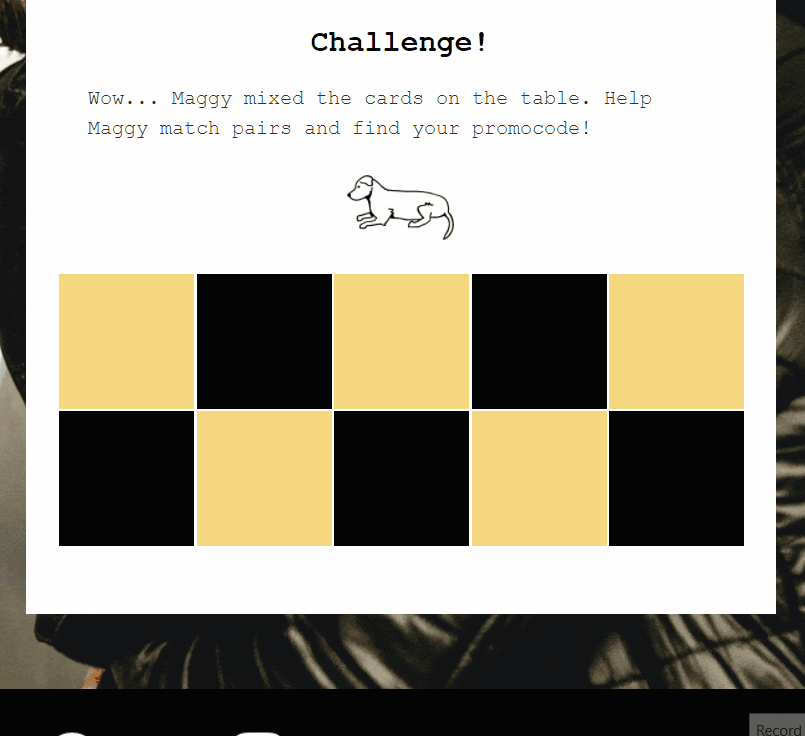
This creates more engagement than a standard animation, since the user becomes an active co-creator of the experience. And you can further increase the user’s emotional investment by providing them with a reward (such as a coupon) that can be used by clicking through to your site. So just like GIFs did years ago, AMP promises to lift engagement rates at every step of the subscriber journey.
The best part is that an AMP email can be much easier to create than a GIF. While high quality GIFs often have to be made by a skilled animator with specialized software, AMP is an open source framework from Google that leverages HTML. This makes it possible to create an interactive experience with static images and some code.
Alternatively, if you want to be really efficient, you can use Dyspatch’s no-code, drag-and-drop AMP email builder to build interactive emails in minutes. Talk about a low time investment for something that could potentially double your conversion rates.
